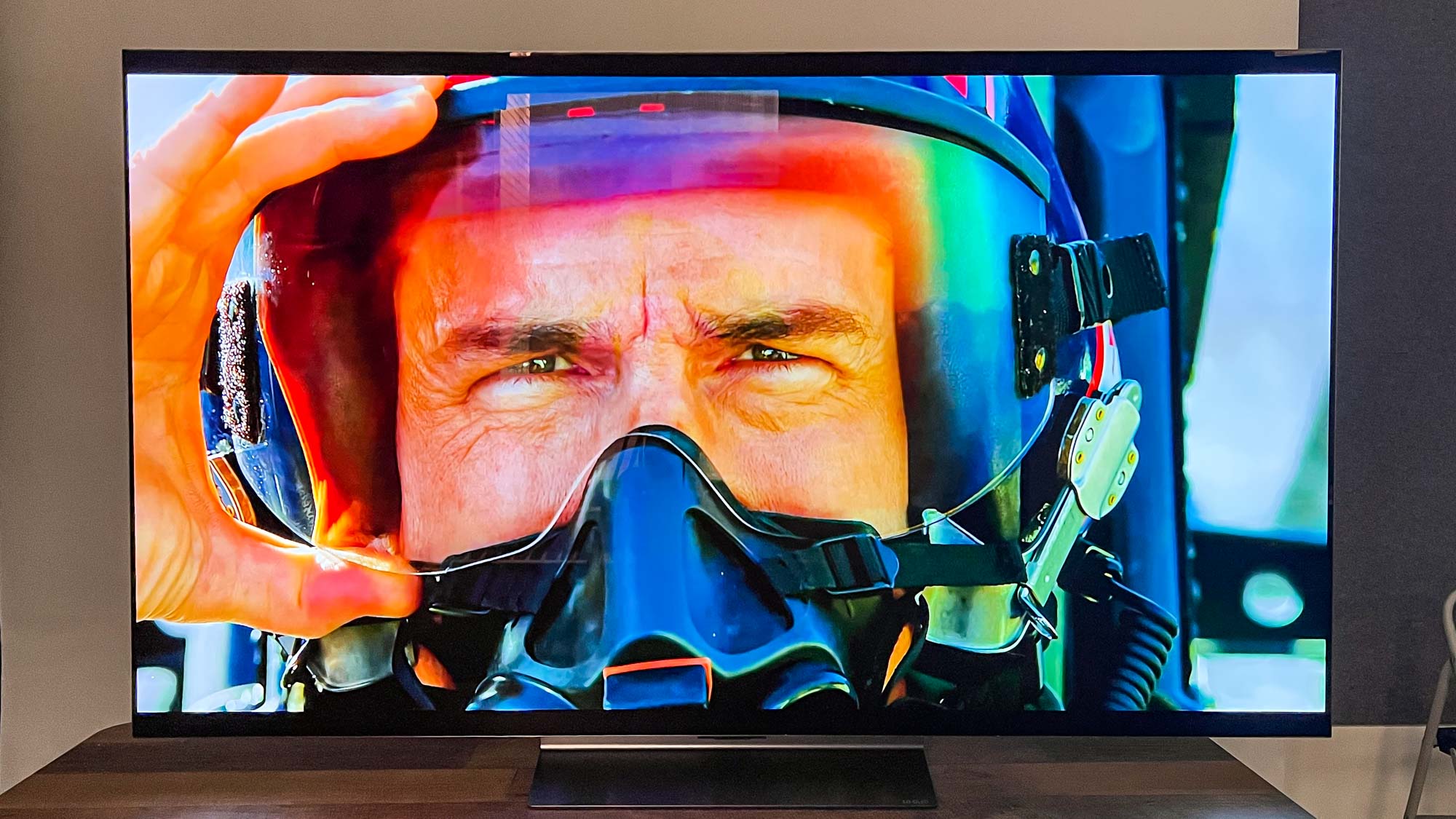What is Filmmaker Mode? Here's why you should use this picture-perfect setting
Filmmaker Mode shows you TV shows and movies the way they were intended

When it comes to the best TVs, they already have excellent picture quality right out of the box. But they also come loaded with features that make the quality of your favorite TV shows and movies even better.
However, sometimes those features go too far, distorting the original intent of the director (cough, motion smoothing). Enter Filmmaker Mode — a setting on a growing number of the best new TVs that is focused on scaling back unnecessary features and displaying TV shows and movies to you the way they were intended.
But this is still a relatively new feature, and not everyone knows about it. I certainly didn’t until I started working at Tom’s Guide and covering TVs regularly. So below, we’re going to explain what Filmmaker Mode is, what it does, which TVs have it (and how to check if yours does) and why using Filmmaker Mode matters.
What is Filmmaker Mode?

Filmmaker Mode was launched in 2019 as a collaboration between the UHD Alliance (UHDA), television manufacturers and members of the filmmaking community (directors, studios, etc.). If the UHDA sounds familiar to you, it’s because they’re also the ones who set the standard for true HDR content.
According to the UHDA, the idea was spearheaded by “Paul Thomas Anderson, Ryan Coogler, Patty Jenkins, Martin Scorsese, and Christopher Nolan” as an effort towards “extending the cinematic experience into the living room.” The goal was to strip away all the extra post-processing settings like motion smoothing on higher-end 4K displays so that the movie would appear as the filmmaker intended. Or, as director Rian Johnson put it, “ a pure, clean expression of what the movie was meant to look like”.
But the other key thing was that this all needed to happen in a way that was convenient for consumers. So unlike other display settings, which require going through a labyrinth of menus and submenus, Filmmaker Mode was to be activated automatically or with the press of a single button. That way it’s not a struggle to turn on.
How Filmmaker Mode works
So now that you know the general idea behind Filmmaker Mode, let’s go behind the scenes and see how it actually works.
Get instant access to breaking news, the hottest reviews, great deals and helpful tips.
In short, Filmmaker Mode sets the frame rate, aspect ratio, color and contrast of a TV show or movie via the metadata of the film so that your TV can display it the way it was intended to be viewed in the cinema. But the UHDA has some technical requirements even more specific than that.
On the UHDA’s About Filmmaker Mode page, the organization lays out the following as the technical specifications Filmmaker Mode must adhere to:
- Maintain source content frame rate & aspect ratio
- White Point must be D65 (this refers to the point on the color spectrum that is defined as white)
- Motion Smoothing/Interpolation must be off
- Overscan can only be on if signaled by the metadata
- Sharpening must be turned off
- TV Noise Reduction must be turned off
- All other image “enhancement” processing must be turned off
These rules apply to both standard dynamic range (SDR) and high dynamic range (HDR) TV shows and movies. Specifically, SDR or HDR10 TV shows and movies, as Dolby Vision’s preset settings are currently not compatible with Filmmaker Mode. However, LG is making an effort for Dolby Vision to get Filmmaker Mode on LG TVs in the near future — possibly by 2024.
As previously mentioned, Filmmaker Mode is easy to turn on. Either your TV remote will have a dedicated button, or the TV will automatically recognize and enable Filmmaker Mode through a TV show or movie’s digital metadata.
What TVs have Filmmaker Mode?

Since this has only been around since 2019, it’s only TVs made in 2020 or later. Additionally, as far as I can tell it’s only available on 4K TVs, so your 1080p Full HD TV won’t have it.
At Filmmaker Mode’s inception, LG Electronics, Panasonic and Vizio all signed on to the initiative and each has TVs on the market with Filmmaker Mode. Since the launch of Filmmaker Mode, Samsung, Philips and Hisense have also started making Filmmaker Mode TVs.
Unfortunately, finding out if your TV has Filmmaker Mode can be a bit challenging. For example, if you look at Best Buy’s product page for the LG C2 OLED, you’ll find no mention of Filmmaker Mode. However, if you go to LG’s product page, you’ll see Filmmaker Mode listed in the specs. So recommend checking the manufacturer’s product page to see if the TV you have or are thinking of buying has Filmmaker Mode.
Why Filmmaker Mode matters

But is it worth going through all this just for one mode? Is Filmmaker mode a nice feature to have, but not a huge difference-maker for your favorite films?
Trust me, you’ll definitely want to use it the next time you watch something, though admittedly you don’t need it for everything. For example, I don’t know that I’d turn it on for a TV show like The Bear, which is phenomenal but isn’t typically watched for its cinematography.
But for a movie? Absolutely make sure it's turned on. And don’t take it from just me. Our managing editor for entertainment and streaming, Henry T. Casey, said that watching last year’s film Barbarian reminded him why watching in Filmmaker Mode can be so much better. It prevents a scene from being too bright or too dark, which really matters when absorbing the intentional choices of the filmmaker.
So when you go shopping for your next TV, look for one with Filmmaker Mode and start experiencing new TV shows and movies the way they were meant to be experienced.
More from Tom's Guide
- Shopping for a smart TV? 3 to buy and 1 to skip
- Hurry! The LG C3 OLED just hit lowest price ever at Amazon
- Samsung just announced a 98-inch QLED TV, and the price might surprise you

Malcolm has been with Tom's Guide since 2022, and has been covering the latest in streaming shows and movies since 2023. He's not one to shy away from a hot take, including that "John Wick" is one of the four greatest films ever made.
